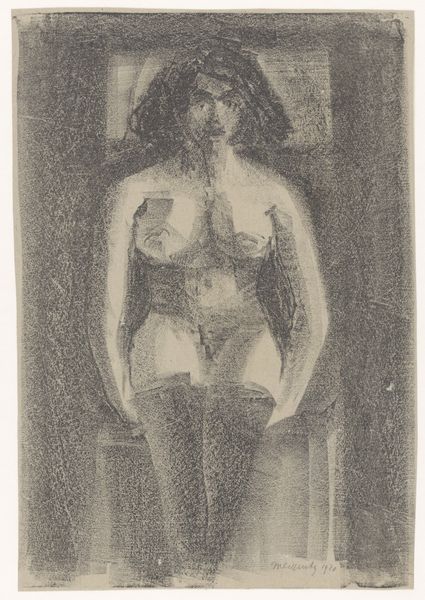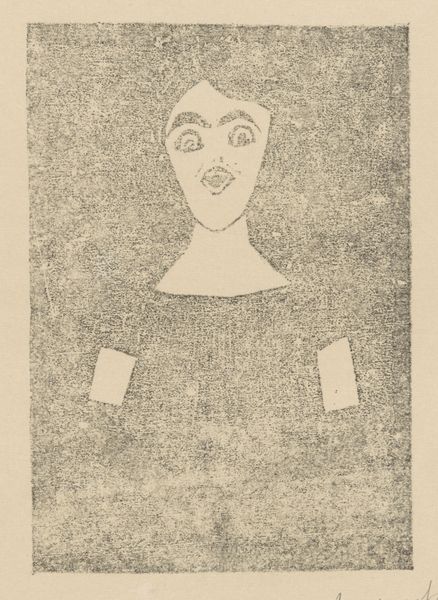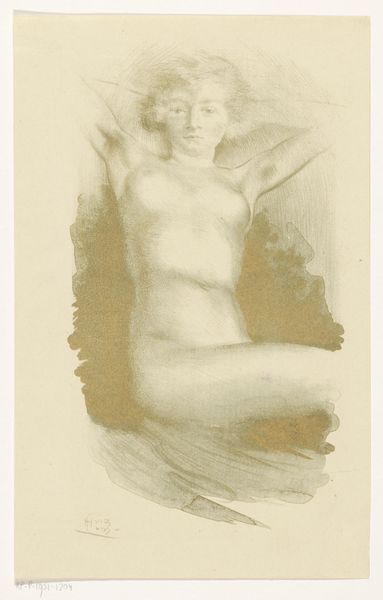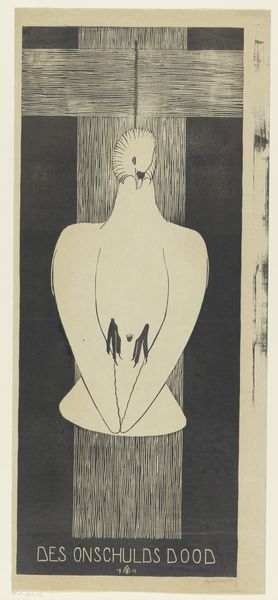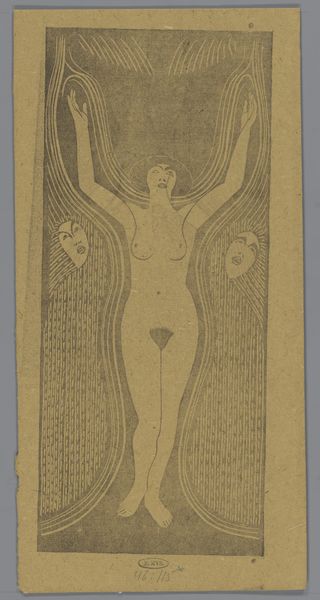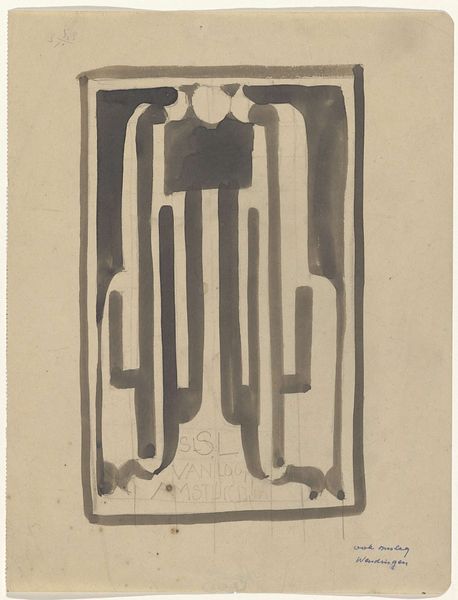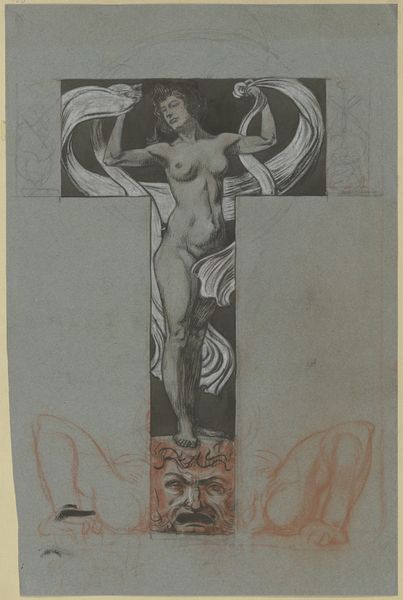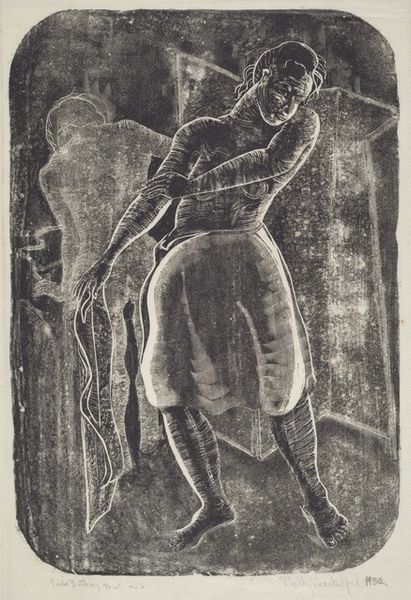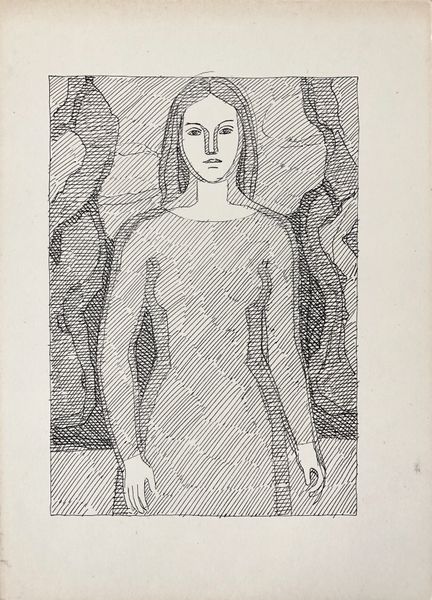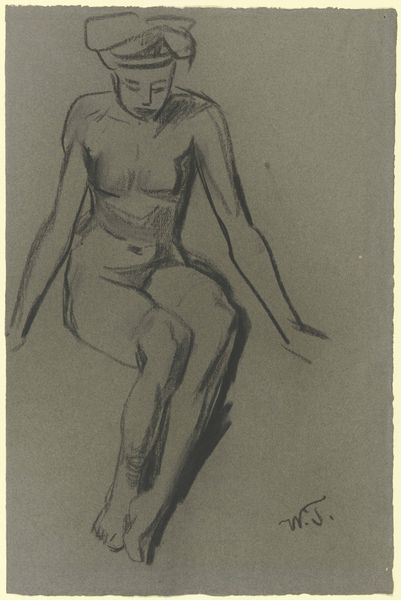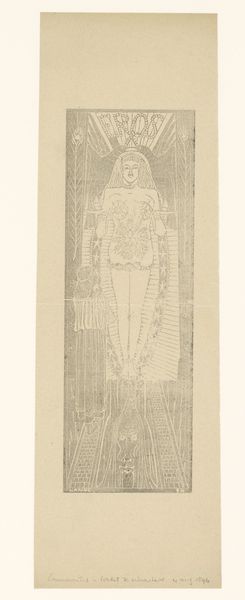
Frontaal gezien, zittend naakt in geometrische omgeving 1920
0:00
0:00
drawing, print, graphite
#
portrait
#
pencil drawn
#
drawing
#
cubism
# print
#
pencil drawing
#
abstraction
#
graphite
#
nude
Dimensions: height 293 mm, width 175 mm
Copyright: Rijks Museum: Open Domain
Editor: This is Samuel Jessurun de Mesquita's "Frontaal gezien, zittend naakt in geometrische omgeving," created around 1920. It’s a graphite drawing, currently held at the Rijksmuseum. I’m struck by the contrast between the nude figure and the hard, geometric shapes that surround her. How do you interpret this piece? Curator: The geometric setting you point out immediately recalls the visual language of Cubism. Beyond its purely formal elements, it’s interesting to consider what the geometric shapes and flattened space *mean*. Think about it—how might these elements alter the way we perceive the female nude, traditionally a symbol of naturalism and idealized beauty? Editor: Well, the geometric forms make her seem less soft, more… fragmented. Almost like her identity is being broken down. Is that something the artist intended? Curator: Perhaps. Consider the cultural context. This was a period of immense social and political upheaval after World War I. The fracturing of form could mirror a fracturing of societal norms and a questioning of traditional values. The nude, always a potent symbol, becomes a vehicle for expressing that sense of fragmentation. What symbols do *you* see within those geometric lines? Is it chaos or order? Editor: That’s fascinating. I hadn't considered the historical context so deeply. It makes me see the work as less about the individual and more about the collective anxieties of the time. It isn't so much her in space as a symbol *of* the space. Curator: Exactly. It showcases a way to explore societal anxieties using timeless archetypes. Do you notice where the artist chose to break the established ‘rules’, so to speak? How can we use those focal points as anchors? Editor: Looking again, her face feels much less fragmented than the rest of her body; she is mostly ‘whole’. Perhaps representing resilience? Curator: Precisely. Symbolism layered through many conscious decisions. I wonder…does the geometry create a kind of armour? Food for thought. Editor: That's given me a lot to consider about the power of symbols in art and how they evolve over time. Thank you!
Comments
No comments
Be the first to comment and join the conversation on the ultimate creative platform.
